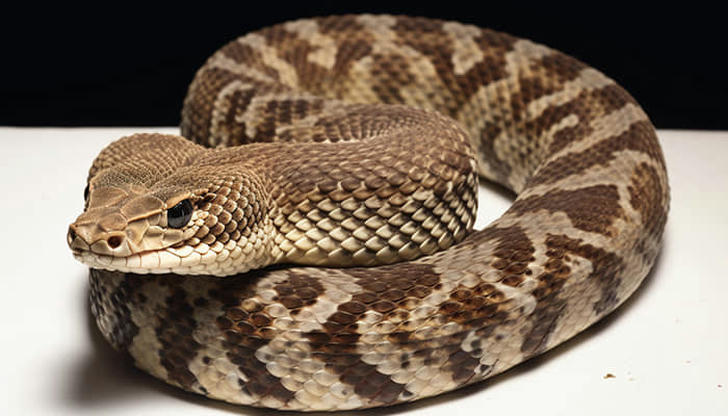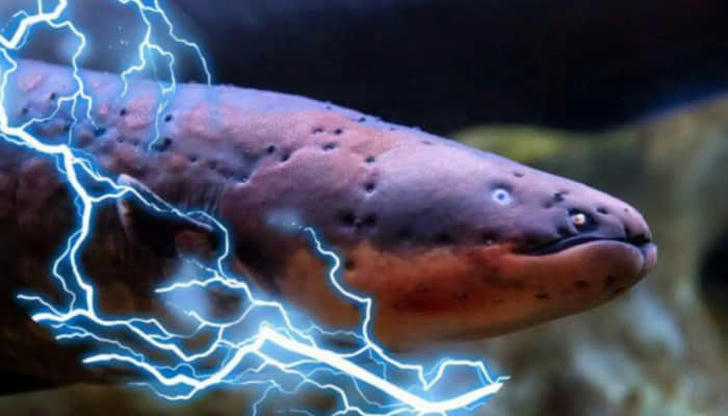Nature’s Marvels: Four Senses Animals Have That Humans Don’t
Radar guns, magnetic compasses, and infrared detectors are man-made inventions that allow humans to transcend the five natural senses of sight, taste, smell, feeling, and hearing. But these gadgets are far from original. Millions of years before humans evolved, various creatures with a remarkable array of “extra” senses that allowed them to perceive the world in ways we can only imagine.

Infrared & Ultraviolet Vision
Like most other vertebrates, rattlesnakes and other rattlesnakes use their eyes to see during the day. But at night, these reptiles use infrared sense organs to detect and hunt warm-blooded prey that would otherwise be completely invisible. Rattlesnakes and other pit vipers possess specialized heat-sensing pits located between their nostrils and eyes. These pits function like tiny infrared detectors, picking up on the warmth emitted by unsuspecting prey, even in complete darkness. The heat-sensitive pit membrane focuses this radiation onto a special retina, creating a crude image that guides the snake’s strike.
Similarly, some birds like hawks, and even tiny creatures like hedgehogs and shrimp, can see into the ultraviolet spectrum. This allows them to spot patterns, food sources, and even potential mates invisible to the human eye.

Echolocation
For creatures that navigate dark environments or cluttered spaces, echolocation provides a distinct advantage. Toothed whales, including dolphins, and nocturnal hunters like bats use this sophisticated technique. They emit high-pitched sound waves, inaudible to us, that bounce off their surroundings. By analyzing the returning echoes, these animals create a detailed three-dimensional picture of their environment.
Bats, for instance, have evolved specialized ear structures. Their large ear flaps act like satellite dishes, collecting the returning sound waves and directing them toward their incredibly sensitive eardrums. This allows them to pinpoint the location, size, and even the texture of objects in complete darkness.

Electric Sense
Another fascinating adaptation is the use of electric fields as a sensory tool. Electric eels and some rays possess modified muscle cells that generate powerful electrical currents. These currents not only serve as a potent weapon for defense and hunting, but also act as a kind of biological sonar. By detecting changes in the electrical field around them, these creatures can navigate murky waters, sense prey hidden in the sediment, and stay aware of their surroundings.
On a subtler level, many fish and even some frogs possess a sense based on weak electrical fields. They have rows of sensory holes on their bodies called “lateral lines” that can detect the faint electrical currents generated by the movement of other animals in the water. This allows them to school together, sense approaching predators, and locate food sources with incredible precision.

Magnetic Sense
Perhaps the most intriguing extra sense is the ability to perceive the Earth’s magnetic field. Our planet is cloaked in an invisible shield: a magnetic field generated by a churning dance deep within its core. These currents, in turn, interact with the flow of charged particles in the Earth’s atmosphere, further shaping the magnetic field. This complex interplay results in a global compass, with invisible lines of force pointing toward the magnetic north and south poles.
Just like a compass needle aligns with these lines, some animals possess an innate magnetic sense. They can perceive these subtle variations in the Earth’s magnetism, allowing them to orient themselves with incredible precision. This ability is crucial for many creatures, guiding them on long-distance migrations and helping them navigate vast and unfamiliar territories.
Studies have shown that creatures as diverse as bees, sharks, turtles, and even migratory birds utilize this sense to orient themselves and undertake incredible journeys. The exact mechanism for this remains a mystery, but scientists believe it might involve tiny deposits of magnetite, a naturally magnetic mineral, found within the nervous systems of these animals. These “internal compasses” could be aligning with the Earth’s magnetic field, guiding them on their long-distance migrations.
Conclusion
These are just a few examples of the remarkable sensory abilities that have emerged through evolution. From infrared vision and echolocation to electric fields and magnetic perception, the animal kingdom possesses a vast array of tools that allow them to interact with their environment in ways we can only begin to understand. This vast array of tools paints a picture of a world far richer in sensory experience than we can imagine.
Studying these natural marvels isn’t just about appreciating the incredible diversity of life. It's a source of inspiration for technological innovation, pushing us to develop new ways to see, hear, and interact with the world around us. Ultimately, understanding these “extra” senses deepens our knowledge of the intricate connection between organisms and their environment, revealing the elegant solutions evolution has crafted for survival and success.
